Have you ever seen a newly hatched baby lobster? Even if you did, you might not know what you were looking at. The youngest juvenile lobsters are practically invisible. Not only do these tiny youngsters emerge from eggs the size of the head of a pin, but they also come out almost completely transparent. At least 75 different lobster species live in the oceans all over the world. Their offspring grow very quickly, and by the time they reach just a few weeks of age they look a lot like miniature versions of their parents.
Young lobsters molt up to 25 times in their first year of life. They keep molting and growing their whole lives, reaching maturity after about 5 to 7 years if they survive that long. Lobsters can potentially live for decades. Females reproduce about once every two years, and they lay an enormous amount of eggs. Let’s learn more about the life of baby lobsters.
Where Do Baby Lobsters Come From?
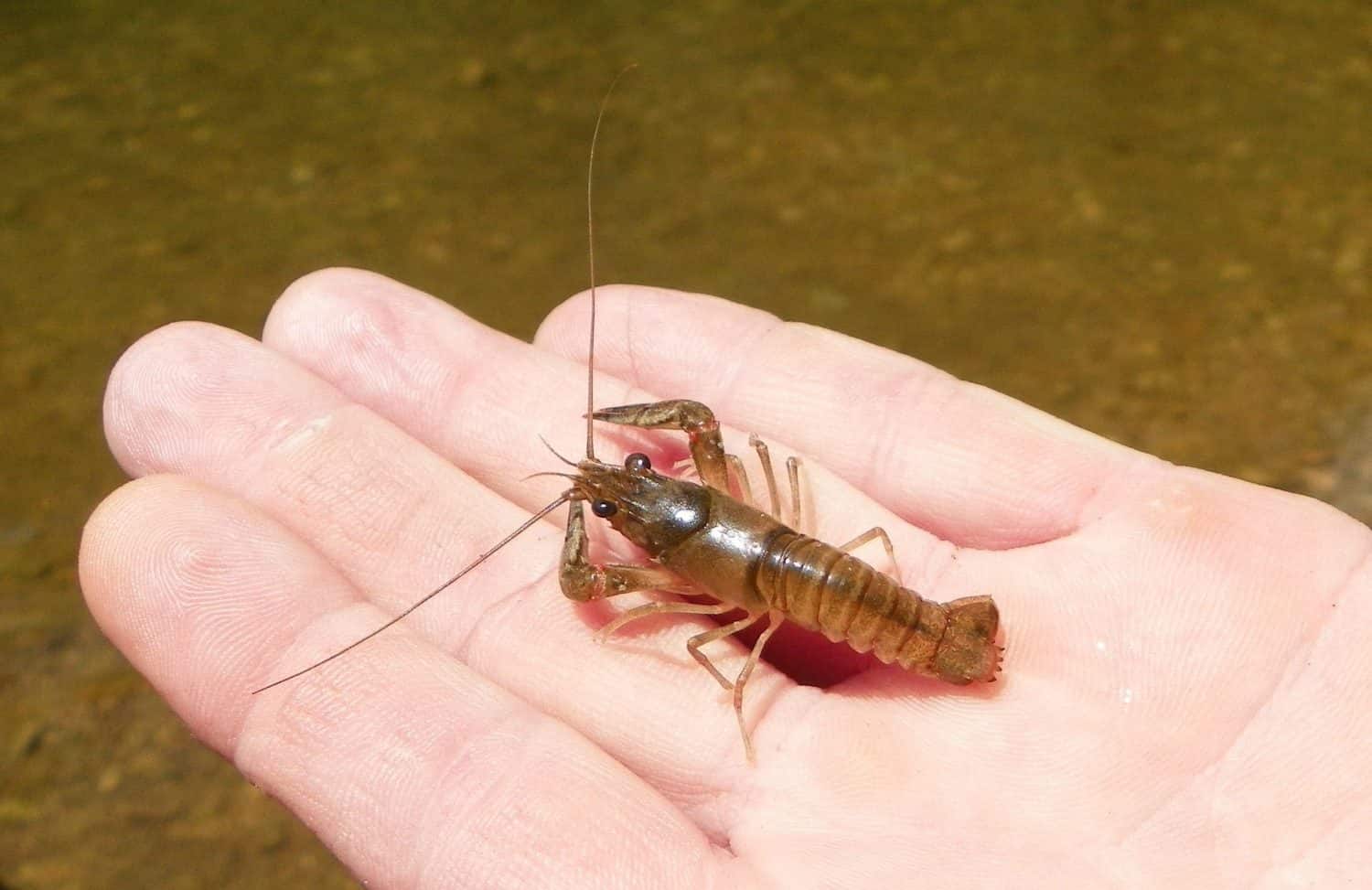
Baby lobsters come from eggs carried by their mothers.
©Wirestock Creators/Shutterstock.com
As crustaceans, lobsters lay eggs. These eggs eventually hatch and release the larval form of the animal. Much like insects, spiders, and other arthropods, a baby lobster must go through many changes to reach its adult form. It will molt many times, growing and changing to reach its adult form.
How Many Eggs Do Lobsters Produce?

Female lobsters can produce up to 100,000 eggs at a time.
©Matteo_Ciani/Shutterstock.com
Lobsters take around 5 to 7 years to reach maturity. At that time, directly after molting, a female may mate with a male. An older, larger female lobster can produce up to 100,000 eggs at a time, though younger, smaller females typically produce around 8,000 or more. These eggs, of course, are tiny. Each one measures no larger than about 1.5 millimeters, or about the size of the head of a pin.
How Long Until a Baby Lobster Hatches?
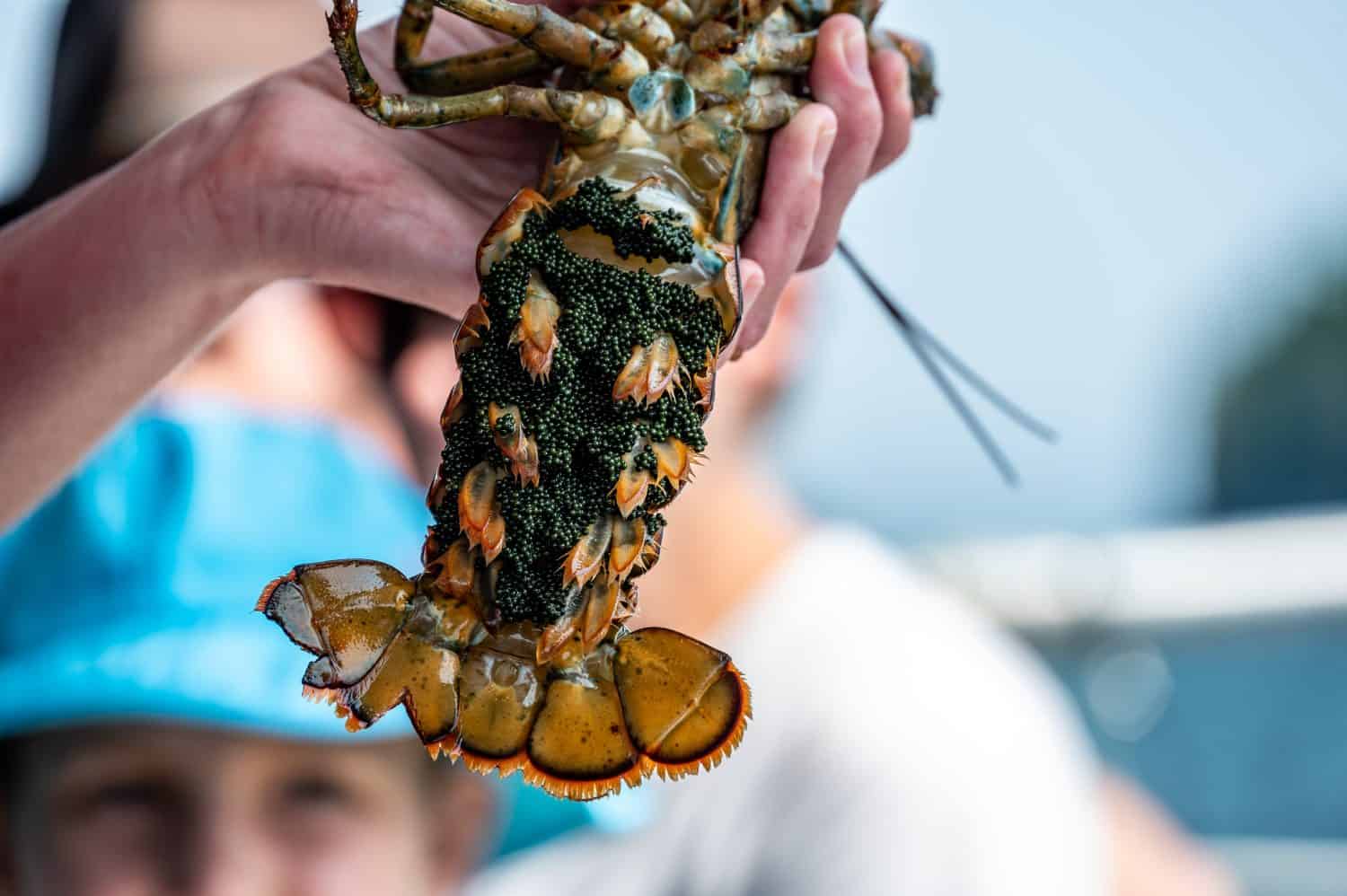
Female lobsters can carry their eggs up to two years, first inside their body, then under their abdomen.
©Lost_in_the_Midwest/Shutterstock.com
Female lobsters carry their fertilized eggs inside their bodies for 9 to 12 months. Then, they carry the eggs on the outside of their body, attached to the spinnerets on the underside of their tail, for another 9 to 12 months until they hatch. Once the eggs finally hatch, the prelarval baby lobsters remain attached to their mother even longer, until their first molt is complete. The total time it takes for a baby lobster to hatch averages about two years, even longer than the gestation period of a baby elephant!
What Does a Baby Lobster Look Like?
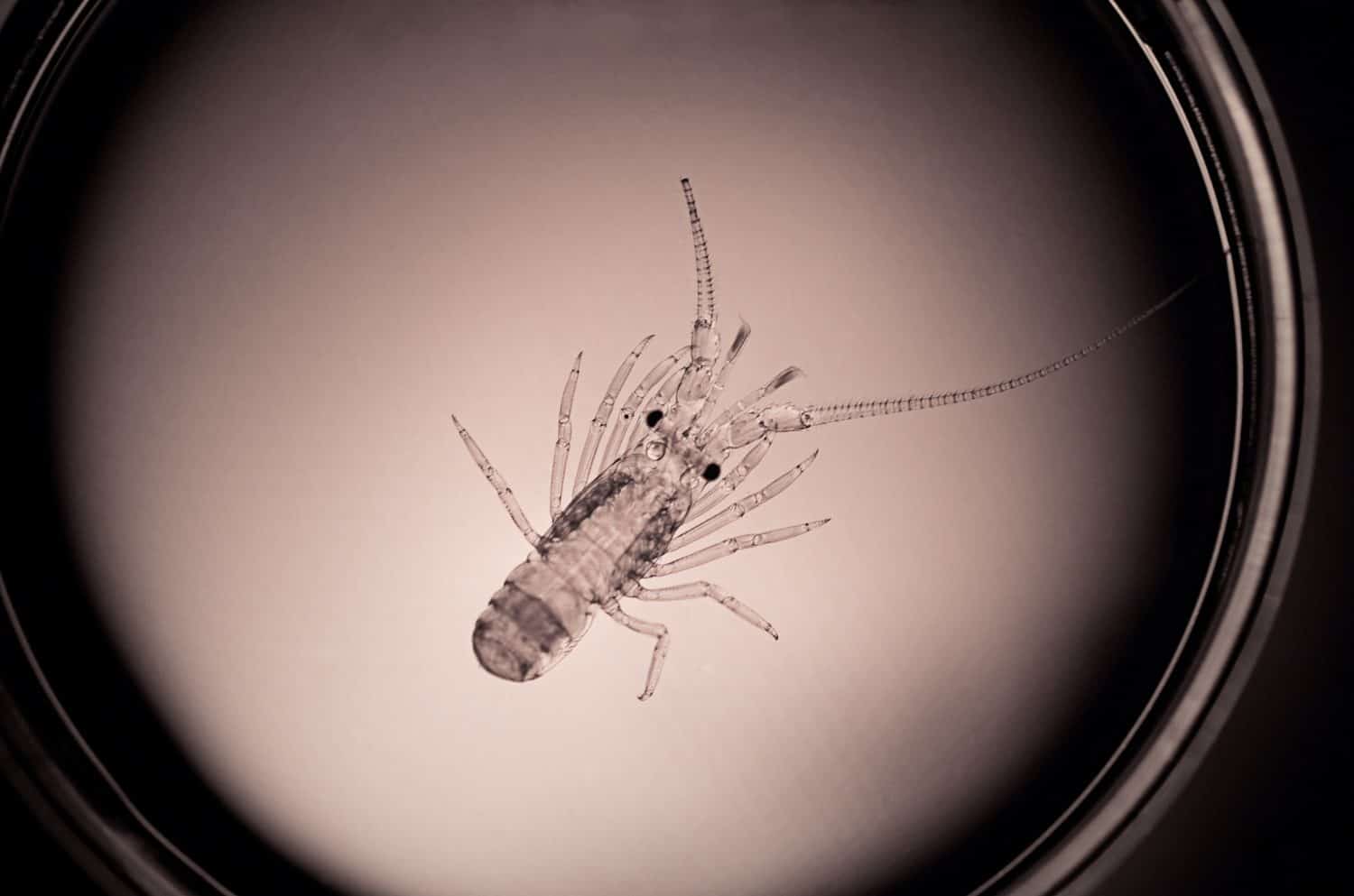
Baby lobsters begin their lives as transparent creatures near the surface of the water.
©Steve Lovegrove/Shutterstock.com
After hatching, a larval baby lobster looks little like its parents. It has a transparent exoskeleton, making it nearly invisible in the water. This possibly helps the tiny lobster avoid being eaten in its earliest days. Within just a few weeks, the lobster will undergo three more molts. Following the fourth molt, the juvenile lobster will have developed color. It will have grown tiny claws and developed its tail, so that it resembles a miniature version of an adult.
Where Do Baby Lobsters Live?
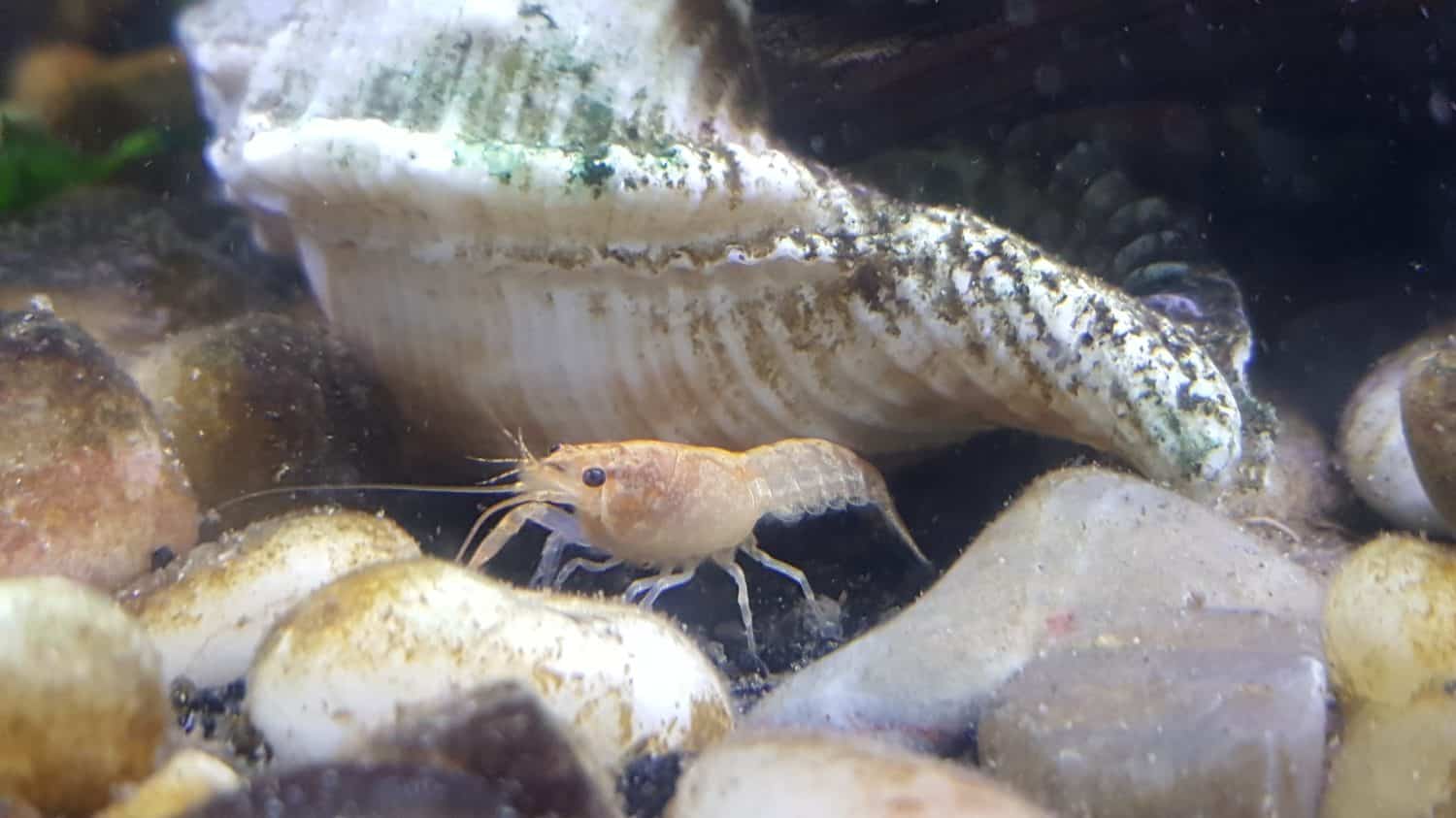
After their first few weeks of life at the surface of the water, baby lobsters move to the ocean floor.
©Badratim/Shutterstock.com
The female lobster swims to the surface of the water to deposit her young when they molt for the first time and leave her body. They remain just below the surface for the first 4 to 6 weeks of their life. During that time, they grow and change, molting three more times. Following their fourth molt, the surviving baby lobsters head for the bottom of the ocean, where they seek shelter and continue to eat and grow.
What Do Baby Lobsters Eat?

Baby lobsters eat different types of zooplankton, then move to larger prey as they mature.
©Hamdiah binti Jailani/Shutterstock.com
A baby lobster eats zooplankton. Researchers at the University of Maine are currently studying what types of zooplankton lobsters eat at different stages of development. They want to learn whether the availability of certain types of zooplankton may affect the survival rate of lobsters. Learning more about exactly which zooplankton support lobster development at different stages, and what effects environmental changes might have on these microscopic organisms, may help protect the settlement of juvenile lobsters in the area.
How Many Baby Lobsters Survive?
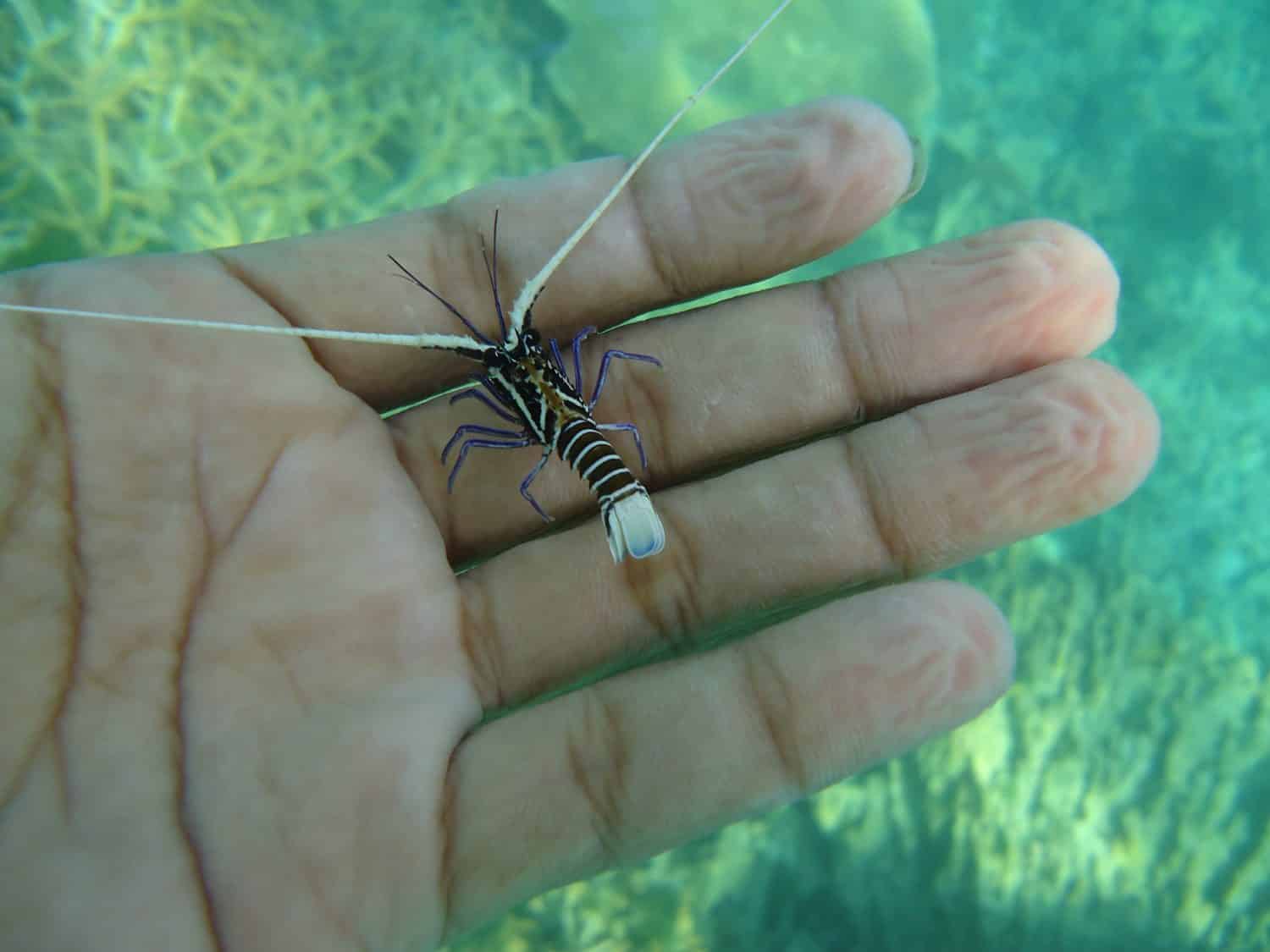
Only about 2 of every 50,000 baby lobsters will make it to full adulthood.
©Raptor_Photos/Shutterstock.com
The life of a baby lobster is fraught with danger. The vast majority die during their first weeks after hatching. According to the National Oceanic and Atmospheric Administration, only about 1 in 100 juvenile lobsters survive long enough to make it to the bottom of the ocean. But the risk does not end there. Scientists estimate that only about 2 in 50,000, or 0.004 percent of the lobsters that hatch actually live to adulthood. Perhaps that staggering number of eggs that female lobsters produce every two years is a good thing. Without so many offspring, lobsters would surely be at risk of extinction.
The photo featured at the top of this post is © Badratim/Shutterstock.com
Thank you for reading! Have some feedback for us? Contact the AZ Animals editorial team.






